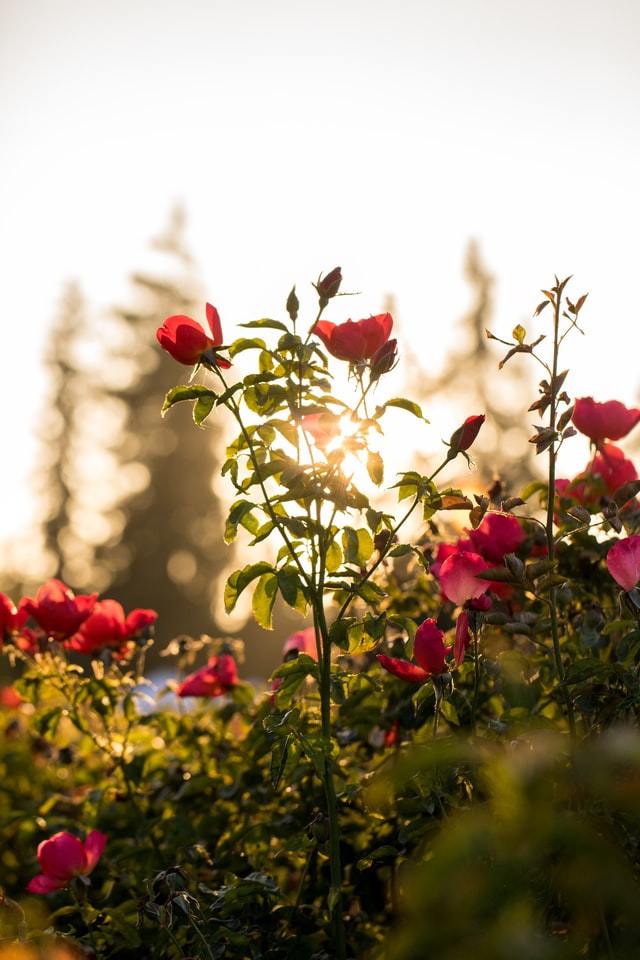I walk to Washington Park every Friday morning. After climbing the last of the steep steps to the Lewis and Clark Memorial, I’m greeted by an engraved plaque nestled into the brick wall.
“The kiss of the sun for pardon,
The song of the birds for mirth,
One is nearer God’s heart in a garden
Than anywhere else on earth.”
The poem was written by the English poet by Dorothy Frances Gurney in 1913. Reading this excerpt got me wondering what other historical easter eggs are waiting to be discovered in this park?
The City of Roses and The Oregonian
Portland wouldn’t be the City of Roses without the early influences of certain literary figures in Oregon’s history.
Thomas J. Dryer started The Oregonian as a weekly periodical on December 4, 1850. Ten years later, in 1860, Henry Pittock purchased The Oregonian and began publishing daily issues; that same year, he married Georgiana Burton Pittock and the two began influencing the beginnings of modern Portland society.
Georgiana Pittock was “a philanthropist, reformer, and society leader with her husband Henry Lewis Pittock, owner and publisher of The Oregonian, she inspired Portland to become the cultural and business center of Oregon.” Georgiana was an avid gardener, so much so that in 1888 she founded and organized the Portland Rose Society. In 1889 Georgiana’s church established a competition for the year’s best homegrown roses, which marked the beginning of the annual Portland Rose Festival. Nearly sixteen years later, Portland boasted over two hundred miles of rose-lined streets.
In 1905 the city began preparing for the Lewis and Clark Centennial Exposition. Over the course of the four-month exposition, nearly 1.6 million visitors traveled to Portland from all over the world. By the end of the display, Portland had earned its reputation as “the City of Roses.”
The International Rose Test Garden
Portland’s newly acquired reputation as the City of Roses, along with the efforts of Jesse A. Curry, led to the creation of the world-renowned International Rose Test Garden.
The Rose Test Garden initially began as a safe haven for hybrid roses grown in Europe in 1915. London hybridists, along with others, feared that the roses would be destroyed during the World War I bombings. Jesse Currey, a rose enthusiast and editor of the Oregon Journal, convinced city officials to create the garden. Hybridists around the world began sending their roses to Portland, and the garden was officially dedicated in 1924.
The garden currently houses more than ten thousand rose bushes from over six hundred rose varieties. The Shakespeare Garden was instituted in 1945 to honor the playwright with roses named after his characters. The dedicated plaque from the LaBarre Shakespeare Club features an engraving of the bard himself and the quote, “Of all flowers methinks a rose is best.”
Located in the largest city park in Portland, the International Rose Test Garden receives around 3.5 million visitors every year. I visit the park and gardens every week, and I still can’t get enough, no matter the season.
Acknowledgement of the Original People of the Land
I pass by the Lewis and Clark Memorial often, and everytime I think about how this beautiful place that I live came to be. I cannot write this without acknowledging the sacrifices and hardships that the Indigenous People of this land had to encounter in order for me to be here today. What we now call Portland, Oregon, and Multnomah County were the traditional lands of the Multnomah, Kathlamet, Clackamas, Tumwater, Tualatin Kalapuya, Wasco, Molalla, Cowlitz, Watlala, and many other tribes who made their homes along the Columbia River.

